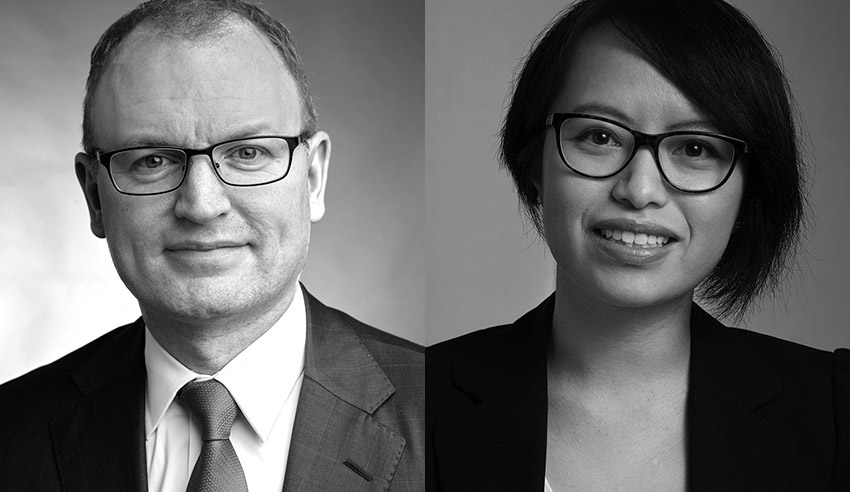The digital and social media ages are having serious implications for the volume and nature of documents needed to be disclosed in litigation, placing increasing burdens upon Australian lawyers.

Last week, Herbert Smith Freehills partners Jason Betts and Christine Tran (pictured) delivered the first of two Masterclasses on how to conduct investigations without creating new legal risks. That first session, on managing internal investigations, can be purchased here.
Such evolution, they warned, has significant consequences for the volume and nature of documents that have to be disclosed in litigation. It also makes it harder, they added, for parties to maintain privilege over their communications.
Such issues, the pair surmised, will “influence the future of litigation in Australia”.
Issues arising from increased use of tech platforms
Speaking to Lawyers Weekly following that Masterclass, Mr Betts and Ms Tran expanded on the changing interpretation of privileged communication, given the use of platforms including but not limited to Zoom, Slack, Google Hangouts and WhatsApp in recent years — trends accelerated by the onset of the coronavirus.
“The major issue is expanding the volume of discovery and, even more importantly, leading to rafts of documents being discovered which contain extremely informal and often prejudicial material in respect of proceedings, which defendants then need to explain through witness evidence and in front of a judge,” the pair outlined.
“Social media has created an enormous temptation to communicate informally about risk and anticipated litigation. Such communications are almost never privileged. Further, they are often written in a pejorative and unguarded way that does not consider how the document might be used in litigation.
“As a result, social media increases litigation risk in a significant way and creates a new avenue to waive privilege over otherwise protected and confidential material.”
A careful communication protocol that has regard to all of the new “digital platforms” for communication, they submitted, will be essential.
What the potential uncertainty means
What must be appreciated, Mr Betts and Ms Tran continued, is that communication via social media is “discoverable and fair game” for Notices to Produce as well as subpoenas.
“The potential to discuss or forward confidential advice is real,” they warned.
“Given the informality of the digital channel, and the increase in volume of communications that it creates, the risk of waiving privilege is higher than ever.”
Communication via such platforms also creates real uncertainty, Mr Betts and Ms Tran added, as to whether privilege can be maintained.
“Even worse, when engaging with external lawyers and experts regarding confidential topics, doing so on social media channels created uncertainty and to the confidential status of material and, in big organisations, increases the risk of someone sending material in a way that is inconsistent with the maintenance of the privilege.”
How litigators can respond
When asked what lawyers in litigation practices can and should be doing in response to such issues and thereby better serve clients, Mr Betts and Ms Tran said they should be having “refreshed discussions” with those clients about the value of careful communication in the modern world, such the “often-surprising scope of documentation” that can and will be discoverable.
This will include, they said, documentation for class actions and/or regulators, as well as the increasing difficulty in claiming privilege over myriad modes of communication.
“The old adage that before clicking send on an email, consider how you would feel if it was on the front page of your website, is a somewhat artificial concept, but a useful checkpoint,” they said.
How law departments can assist
For in-house counsel, the most strategic times to speak with external litigation teams about careful discovery risk and privilege “are during ‘peace time’, prior to risk arising and before the cut and thrust of litigation”, Mr Betts and Ms Tran argued.
This is in spite, they noted, of a perception that litigators are the ones that law departments should call when things go bad.
“[Peace time is] when careful protocols can be established to consider how the business is going to record what it needs to record to execute the process of generating revenue, but in a way that doesn’t create unnecessary litigation exposure,” they explained.
“Finding time within the business cycle of boards, senior management committees and important parts of the business to have frank discussions about the need for careful document control is often an important discipline.”
To purchase the second of the two aforementioned Masterclasses, click here.

Jerome Doraisamy is the managing editor of professional services (including Lawyers Weekly, HR Leader, Accountants Daily, and Accounting Times). He is also the author of The Wellness Doctrines book series, an admitted solicitor in New South Wales, and a board director of the Minds Count Foundation.
You can email Jerome at: